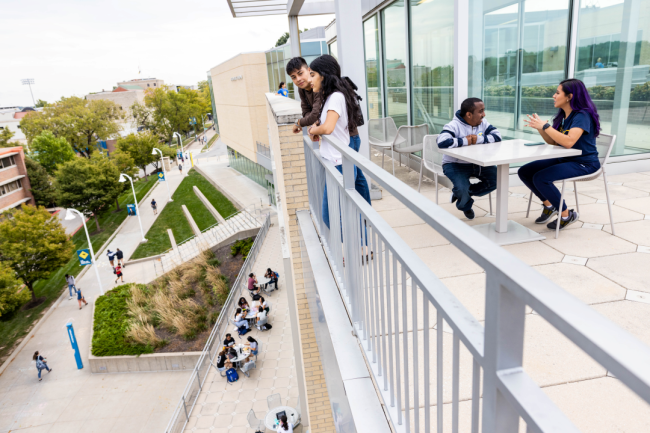You have /5 articles left.
Sign up for a free account or log in.

Students at the University of Missouri at Kansas City can participate in supplemental instruction for difficult courses, gaining near-peer support and study skills for the future.
University of Missouri at Kansas City
Supplemental instruction (SI) is a common learning practice to aid students in courses with high rates of D and F grades and withdrawals, and this year the University of Missouri at Kansas City celebrates 50 years of offering and expanding SI at its own institution and across the country.
UMKC is home to the International Center for Supplemental Instruction, which provides resources, training and accreditation to other colleges and universities across the globe. University SI experts share best practices in offering groups and expanding practices.
The background: Supplemental instruction first launched at the University of Missouri at Kansas City in 1973, says Chanté Evans, academic support coordinator for supplemental instruction and tutoring at UMKC.
“This was right after the civil rights era and at a time where students of color were integrating into UMKC,” Evans explains. “Retention rates were declining, and there was a need for a new type of academic support program that would be low cost, yet effective.”
Rather than targeting at-risk students, supplemental instruction aids all students enrolled in difficult courses, or those with high DFW rates.
The first SI program at UMKC assisted in a human anatomy class in the school of dentistry before expanding throughout the university—and the country.
How it works: SI involves a group-based study session facilitated by a student who has recently completed the course with the same instructor and earned a high grade—B-plus or higher. The application process includes a recommendation from the faculty member and an interview with UMKC staff.
The goal is to equip students with new study skills while establishing in them the confidence to ask questions, reinforce the material and collaborate with peers in a safe space. Participation is voluntary but open to all students in a specific course.
Sessions last an hour, twice a week, and SI leaders teach their peers how to take notes, stay organized and prepare for tests.
The student leader is responsible for creating a lesson plan, devising activities for different learning styles and reviewing course material from that week, Evans says. Students do not reteach material to individuals, the way they do in tutoring, but rather facilitate conversation and encourage critical thinking across the group.
SI leaders must also attend class meetings, read assigned materials and stay in contact with the professor and an SI supervisor.
Students who participate in supplemental instruction at UMKC are 2.5 times more likely to retain than those who study on their own and are more likely to receive a final grade a half letter or whole letter higher than their peers.
Nationally, UMKC has trained faculty and staff from over 1,500 institutions and 34 countries.
Scaling up: Over the years, SI at UMKC has evolved with the times and with student needs, Evans says.
In the 1990s, the university introduced video-based supplemental instruction, and during remote instruction due to the COVID-19 pandemic, it launched virtual options for students to participate in SI.
More recently, the university has focused on fostering belonging and community among the SI leader cohort and SI leaders and their peer group members.
University leaders have also prioritized SI in class registration, making it so any student who’s enrolled in a course with an SI program can participate with no conflict to their academic schedule.
The initiative, called SI Edge, requires staff to partner with the campus registrar to include a SI session time into the student information system. “When students register for classes, the SI Session automatically shows up on their course schedule,” explains Sarah Amos, academic support coordinator for SI and tutoring.
While SI Edge is still in the pilot stage, student attendance has grown already, because learners see SI as a part of their regular schedule.
DIY: To scale supplemental instruction, Amos and Evans say six resources are necessary:
- Faculty buy-in. One of the greatest areas of engagement is with faculty members who teach difficult courses, whether that’s promoting the opportunities to students, staying in communication with the SI leader or providing referrals for hiring of SI leaders.
- Budget. SI leaders are paid, so having adequate funding to compensate students is critical to scaling the initiative.
- Course identification. Course data provide insight into where students are struggling and need the most assistance, which is where staff prioritize SI. Prerequisites that function as gatekeepers or barriers also receive special attention.
- Institutional support. When administration and other campus leaders are involved, staffers are more easily able to get budget and resources.
- Student leaders. SI courses are only as successful as their leader, making recruitment for eligible leaders a priority—and sometimes a challenge.
- Space. Physical meeting areas to hold sessions and trainings for supplemental instruction are also necessary.
If your student success program has a unique feature or twist, we’d like to know about it. Click here to submit.




